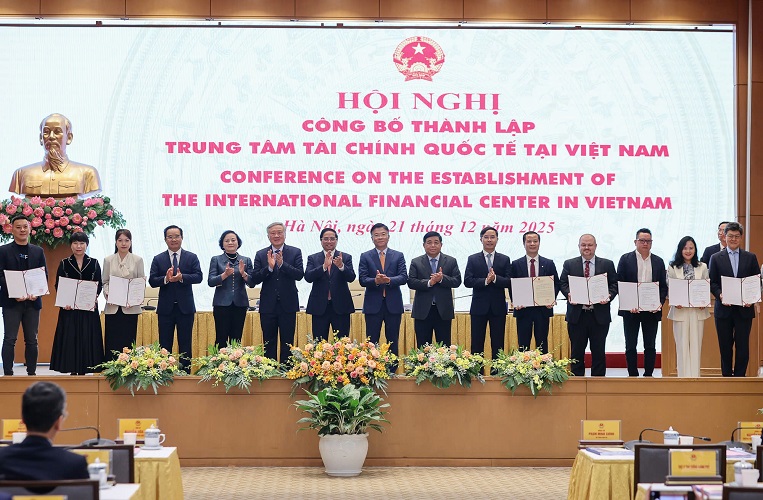WHAT IS A FOREIGN LOAN? WHAT ARE THE LOAN REGULATIONS?
In investment and business activities, businesses will always need a certain amount of capital for the project to operate smoothly. However, in some cases, investors decide to borrow foreign capital to have enough project operating costs. So what are the regulations on foreign loans that they need to pay attention to? Find out in the article below.
- Legal basis when borrowing foreign capital
- Decree 219/2013/ND-CP
- Circular 08/2023/TT-NHNN
- What is a foreign loan?
Foreign borrowing is defined according to Clause 1, Article 3 of Decree 219/2013/ND-CP as a borrower receiving financial resources from a non-resident through the signing and implementation of agreements. about foreign loans. These agreements may include the signing of loan contracts, deferred payment sales contracts, loan entrustment contracts, financial leasing contracts, or issuance of debt instruments by the borrower.
Typically, foreign capital loans may be similar to foreign loans that are not guaranteed by the Government. So investors need to pay attention to the regulations on unguaranteed foreign loans below.
- What is a foreign loan without guarantee?
According to the provisions of Article 3, Clause 2 of Decree 219/2013/ND-CP, borrowing from a foreign country without a Government guarantee means that the borrower carries out the borrowing process under its own responsibility. Self-borrow and repay debt to foreign financial providers
- Regulations when borrowing foreign capital
- Requirements for foreign loan agreements
- Type of borrower: the lender commits to providing the borrower with a sum of money or assets (in the case of a foreign loan in the form of a financial lease contract), to use for a specific purpose in specified period of time, with the principle of repaying both principal and interest (if there is an agreement on interest)
- Form of foreign loan agreement: must be made in writing, and if implemented in the form of an electronic data message, must comply with the provisions of law on electronic transactions.
- Signing of foreign loan agreement: signed before or on the date of capital withdrawal. Note: Signing on the day of capital withdrawal can only be done in the following situations:
(i) When this is a short-term foreign loan and disbursement is made after the loan agreement is signed;
(ii) When foreign loans arise from transferring money from the investment preparation process of projects that have been granted Investment Registration Certificate into foreign loans, according to the provisions of law on management Foreign Exchange management for foreign loan repayment activities and foreign direct investment activities in Vietnam.
- Requirements on foreign loan currency
- The currency for foreign loans is foreign currency.
- The implementation of foreign loans in Vietnamese Dong only occurs in the following situations:
+ If the borrower is a microfinance institution.
+ When the borrower is an enterprise with foreign direct investment capital and borrows from the profits of direct investment activities in the territory of Vietnam, because the lender is a foreign investor contributing capital in that country. borrow.
+ In case the borrower withdraws capital and repays the debt in foreign currency, while the debt obligation of the loan is determined in Vietnamese Dong
- Requirements on foreign loan costs
- The borrower and related parties are responsible for ensuring compliance with current legal regulations related to foreign loan interest rates and all other costs related to foreign loans, according to the agreements on foreign loans. specific costs.
- To manage self-executed and self-paid foreign loan limits, when necessary, the Governor of the State Bank of Vietnam has the authority to decide on conditions for applying foreign loan costs and announce the ceiling on loan costs. abroad in each period.
- Some common questions about foreign loan
- What are the procedures for borrowing foreign capital?
Borrowing foreign capital is usually done by the enterprise itself and bears the responsibility and obligation for that loan. So to apply for a foreign loan, they need to follow the following process:
Step 1: Prepare documents:
- Application for foreign loan that the Government does not guarantee:
- If the borrower has registered loan information on the Website before submitting the foreign loan registration application, the borrower will print the Application from the Website, sign and stamp.
- In case the borrower has not declared loan information on the website before submitting the application, the borrower will complete the Foreign Loan Application according to Appendix 01.
Step 2: Submit application:
- Competent authority:
- State Bank (Foreign Exchange Management Department): for loans with a loan amount of over 10 million USD (or another currency of equivalent value)
- State Bank branch in province or city where the borrower is headquartered: for loans with loan amount up to 10 million USD (or other currency of equivalent value)
- Application deadline:
- 30 working days from the date of signing the medium and long-term foreign loan agreement.
- 30 working days from the date of signing the agreement to extend foreign loans from short-term to medium- and long-term, for loans specified in Clause 2, Article 11 of Circular 12/2022/TT-NHNN, with the duration Extension within 01 year from the date of first capital withdrawal.
- 30 working days from the date the borrower is granted a Business Registration Certificate, License for establishment and operation according to specialized laws, and date of signing an investment contract in the form of public-private partnership ( PPP contract), and the date the parties sign a foreign loan agreement to convert the amount of investment preparation into loan capital (depending on which date comes later), applicable to the foreign loan arising from the transfer of the amount Carry out investment preparation of projects that have been granted Investment Registration Certificates to become foreign loans.
- 60 working days from the date of 01 year from the date of first capital withdrawal, for loans specified in Clause 2, Article 11 of Circular 12/2022/TT-NHNN that are agreed to be extended after 01 year from first capital withdrawal date, and loan amount specified in Clause 3, Article 11 of Circular 12/2022/TT-NHNN.
Step 3: Get results:
Time: 12 working days, 15 working days or 45 working days from the date of receipt of valid documents depending on the case.
- How is the interest rate on foreign exchange calculated?
According to the provisions of Article 2, Clause 5 of Circular 12/2014/TT-NHNN, loan costs are calculated as: total costs calculated as an annual percentage of the total loan value (including interest foreign loan interest + all other costs related to the foreign loan that the Borrower must definitely pay to the lender, loan guarantors, loan insurers, agents, and related parties other)
According to this regulation, the parties have the right to negotiate the interest rate of the loan. Only in necessary cases does the Governor of the State Bank of Vietnam have the authority to decide and announce a limit on these loan costs. However, there are currently no specific regulations on this limit for foreign loans in foreign currencies, but the interest rate is agreed between the two parties.
Phone: (+84) 961 366 238
Email:
- vphn@siglaw.com.vn
- vphcm@siglaw.com.vn
Headquarters: No.44/A32-NV13, Gleximco A, Le Trong Tan street, An Khanh, Hoai Duc, Ha Noi, Vietnam.
Southern branch: No.103 – 105 Nguyen Dinh Chieu Str., Xuan Hoa Ward, Ho Chi Minh.
Central branch: 177 Trung Nu Vuong, Hai Chau District, Da Nang City
Facebook: https://www.facebook.com/hangluatSiglaw










